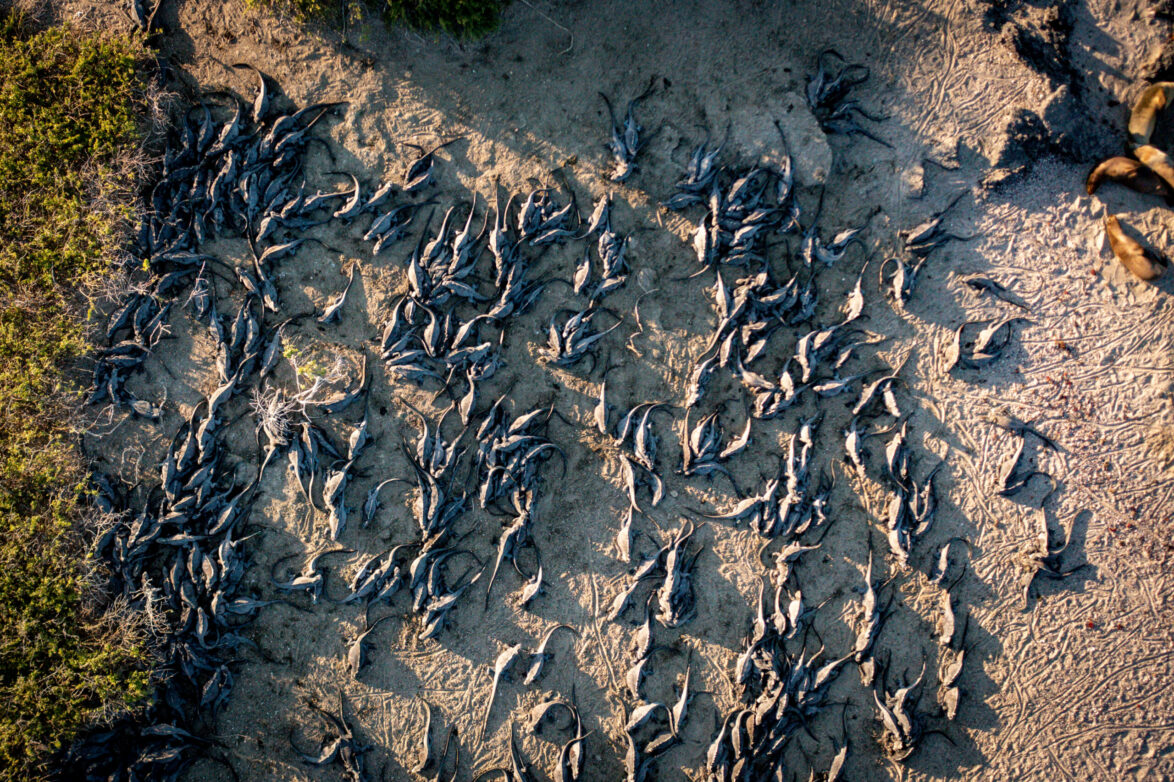

The mysteries of marine iguanas
How can citizen science help unlock the mysteries of Galapagos marine iguanas and help us conserve this endemic species?
What do you think of when we talk about the Galapagos Islands? Do you imagine the pristine white beaches? Do you think of the intense volcanoes that made these Islands? Or do you think of the amazing wildlife both on the Islands and in the waters? Charles Darwin was the same; when he came to the Islands in 1835, he was amazed by the biodiversity. Although similar from island to island, he noticed the unique creatures were somehow perfectly adapted to their homes. From his work, we learnt about the Galapagos finches, all derived from a common ancestor. Each famously evolved to have a different beak depending on where they lived and the foods available.

To this day, scientific research of a similar kind is still underway to understand the unique species of Galapagos. As recently as 2017, a group of scientists found differences in one of Galapagos’ most famous inhabitants, the marine iguana. Using genetic samples from ~1,500 individuals and appearances of over 150, they discovered 11 subspecies of marine iguana across at least six different islands, showing how much more there is still to find out about the endemic species.
What do we already know about marine iguanas?
The marine iguana is the only lizard in the world that swims and feeds in the ocean. They can hold their breath for up to 10 minutes which is all pretty incredible! Although Darwin described them as “disgusting clumsy Lizards”, he probably never saw them outrun a racer snake from birth, as those of you who watched theBBC’s Planet Earth II documentary will remember!
Snakes and bad press aren’t the only things these iguanas have to contend with; their main threat is humans. These fearsome creatures are vulnerable to El Niño events, which can cause extreme population fluctuations – up to 85% mortality. Climate change is thought to be making El Niño events more extreme and in the future scientists are predicting an increase in frequency. Another major threat is the predation from introduced species such as cats, dogs and rats. Finally, they are at risk from pollution such as oil spills and possibly plastics. To understand the seriousness of these threats, we are missing a key piece of information: the marine iguanas’ population size.

11
subspecies of marine iguana have been identified in Galapagos
What do we still need to find out about marine iguanas?
Today, scientists are working to fill the gaps in our iguana knowledge, discovering where the colonies are, how big their populations are and how healthy they are. This information is considered some of the most basic for scientists, and it can help to inform future research. At the same time, it can help to protect the species because the more we know about the colonies, the better we can support local conservation and management. For example, suppose the various colonies of marine iguanas are not interbreeding. In that case, it could mean the population sizes are smaller than we first thought and need better protection.
During November 2021, Dr Amy MacLeod and her team were out on and around the Islands, doing population estimates in a new and interesting way. Since the colonies are often found in hard-to-reach places, the team uses drones to collect images of marine iguanas across the islands, including Pinta, Genovesa, Marchena, Darwin, Wolf, Isabela and Fernandina. These pictures will later be searched for iguanas by citizen scientists like you and me, volunteers who want to help with scientific research in their free time. The project will be launched to the public in January 2022, so if you have a computer or a phone and a spare few minutes, you too can help protect marine iguanas from your own home.


Iguanas From Above
Iguanas from Above is an innovative project that combines drone technology with citizen science to monitor the health of marine iguana populations in Galapagos.
Related articles


Iguanas from Above: Citizen science in action

Project Update: Iguanas From Above


